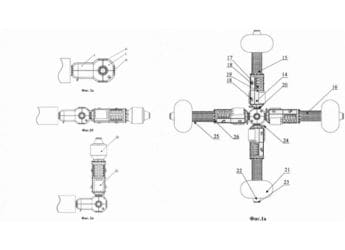- Home
- Science
- Science News
- JWST Reveals Pluto’s Haze Cools Atmosphere, Paints Charon’s Poles Red
JWST Reveals Pluto’s Haze Cools Atmosphere, Paints Charon’s Poles Red
JWST confirms Pluto’s haze cools its mesosphere and drives methane escape, coating Charon’s poles red. The haze absorbs UV light, heats the upper atmosphere, and re-radiates heat as infrared.

Photo Credit: NASA
Pluto’s haze cools its skies and drifts to Charon, painting its poles a mysterious red
Pluto and its moon Charon are shown with a thin haze of organic particles covering Pluto's sunlit side. The haze both cools Pluto's upper atmosphere by radiating heat into space and absorbs ultraviolet light that helps propel methane molecules to escape. This explains why Pluto's mesosphere is colder than expected and why methane is leaking and even coating Charon's poles red. The effect was predicted by Xi Zhang, and new JWST/MIRI observations confirm it. The results have implications for understanding Titan's haze and Earth's early atmosphere.
A Haze that Cools and Warms Pluto
According to a new study, using JWST's mid-infrared observations, a team led by Tanguy Bertrand detected thermal emission from this haze layer. The tiny aerosol particles are thought to be complex hydrocarbons (“tholins”) and ices. These particles absorb the Sun's ultraviolet light, heating the upper atmosphere and giving methane molecules extra energy. The haze then re-radiates that energy as infrared light, cooling the middle layers.
In fact, Zhang's models show Pluto's gases alone would overheat the mesosphere, so the haze must supply net cooling to balance the energy budget. Together, these effects mean the haze largely controls Pluto's atmospheric energy balance. How much net warming versus cooling occurs depends on particle size and composition.
Haze Drives Escape and Paints Charon Red
Pluto's atmosphere is so thin that any nudge can send molecules into space. Planetary scientist Will Grundy estimated Pluto loses about 1.3 kg/s of methane, with roughly 2.5% intercepted by Charon. The haze layer provides that nudge: its particles absorb solar UV light, heating molecules until they can escape Pluto's gravity. The escaping methane then deposits on Charon's poles, where radiation transforms it into complex, reddish tholin compounds.
This process effectively lets Pluto “paint” Charon's poles with organic red stain—a phenomenon not seen elsewhere in the Solar System. By linking Pluto's climate and Charon's surface chemistry, the haze-driven escape provides a rare example of atmospheric exchange on icy worlds.
Get your daily dose of tech news, reviews, and insights, in under 80 characters on Gadgets 360 Turbo. Connect with fellow tech lovers on our Forum. Follow us on X, Facebook, WhatsApp, Threads and Google News for instant updates. Catch all the action on our YouTube channel.
Related Stories
- Samsung Galaxy Unpacked 2025
- ChatGPT
- Redmi Note 14 Pro+
- iPhone 16
- Apple Vision Pro
- Oneplus 12
- OnePlus Nord CE 3 Lite 5G
- iPhone 13
- Xiaomi 14 Pro
- Oppo Find N3
- Tecno Spark Go (2023)
- Realme V30
- Best Phones Under 25000
- Samsung Galaxy S24 Series
- Cryptocurrency
- iQoo 12
- Samsung Galaxy S24 Ultra
- Giottus
- Samsung Galaxy Z Flip 5
- Apple 'Scary Fast'
- Housefull 5
- GoPro Hero 12 Black Review
- Invincible Season 2
- JioGlass
- HD Ready TV
- Laptop Under 50000
- Smartwatch Under 10000
- Latest Mobile Phones
- Compare Phones
- Huawei Nova 15
- Huawei Nova 15 Pro
- Huawei Nova 15 Ultra
- OnePlus 15R
- Realme Narzo 90x 5G
- Realme Narzo 90 5G
- Vivo S50 Pro Mini
- Vivo S50
- Asus ProArt P16
- MacBook Pro 14-inch (M5, 2025)
- Huawei MatePad 11.5 (2026)
- OnePlus Pad Go 2 (5G)
- Huawei Watch 10th Anniversary Edition
- OnePlus Watch Lite
- Acerpure Nitro Z Series 100-inch QLED TV
- Samsung 43 Inch LED Ultra HD (4K) Smart TV (UA43UE81AFULXL)
- Asus ROG Ally
- Nintendo Switch Lite
- Haier 1.6 Ton 5 Star Inverter Split AC (HSU19G-MZAID5BN-INV)
- Haier 1.6 Ton 5 Star Inverter Split AC (HSU19G-MZAIM5BN-INV)

















